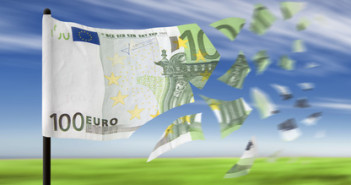EUR/USD dropped under the weight of the debt crisis complications and fell below 1.40. Next support is at 1.3950, followed by 1.3838, which was a swing low back in July.Â
The move challenges the fierce announcement by the SNB to defend an exchange rate of 1.20 for EUR/CHF. The move initially helped the euro. In the meantime, EUR/CHF remains above this floor.
Euro debt crisis
The situation in the euro-zone is worsening. The chances of Greece seeing a hard default soon are higher today as the German finance minister said that Greece will receive no aid if it doesn’t meet conditions. One year Greek notes rose above 80%.
In Italy, the government retreated from some of the austerity measures, and then saw its bond yields rise back into the danger zone. Is Berlusconi punished by Trichet?
In Spain, there was a report that the government admitted that it was close to getting a bailout in the middle of August. The government denied, but the worries remain. One Spanish bank, CAM, was bailed out by the government.
Here are more reasons for the weaker euro.
Lower chances of QE3 in the US
It took some time after the positive US ISM Non-Manufacturing PMI to be digested. A stronger services sector means that the chances of recession are lower, and the chances of an intervention by the central bank are lower.
More quantitative easing means a weaker dollar, and the chances are lower. The Fed might do other things, but QE is less likely, especially as inflation is higher, and there’s growing opposition to further easing within the ranks of the central bank.
The 1.4030 support was defended for some time, but after it was breached, the euro is free falling.
Resistance is found at 1.4030, which switches positions. Further minor resistance is at 1.41.
For more on the euro, see the EUR/USD.



